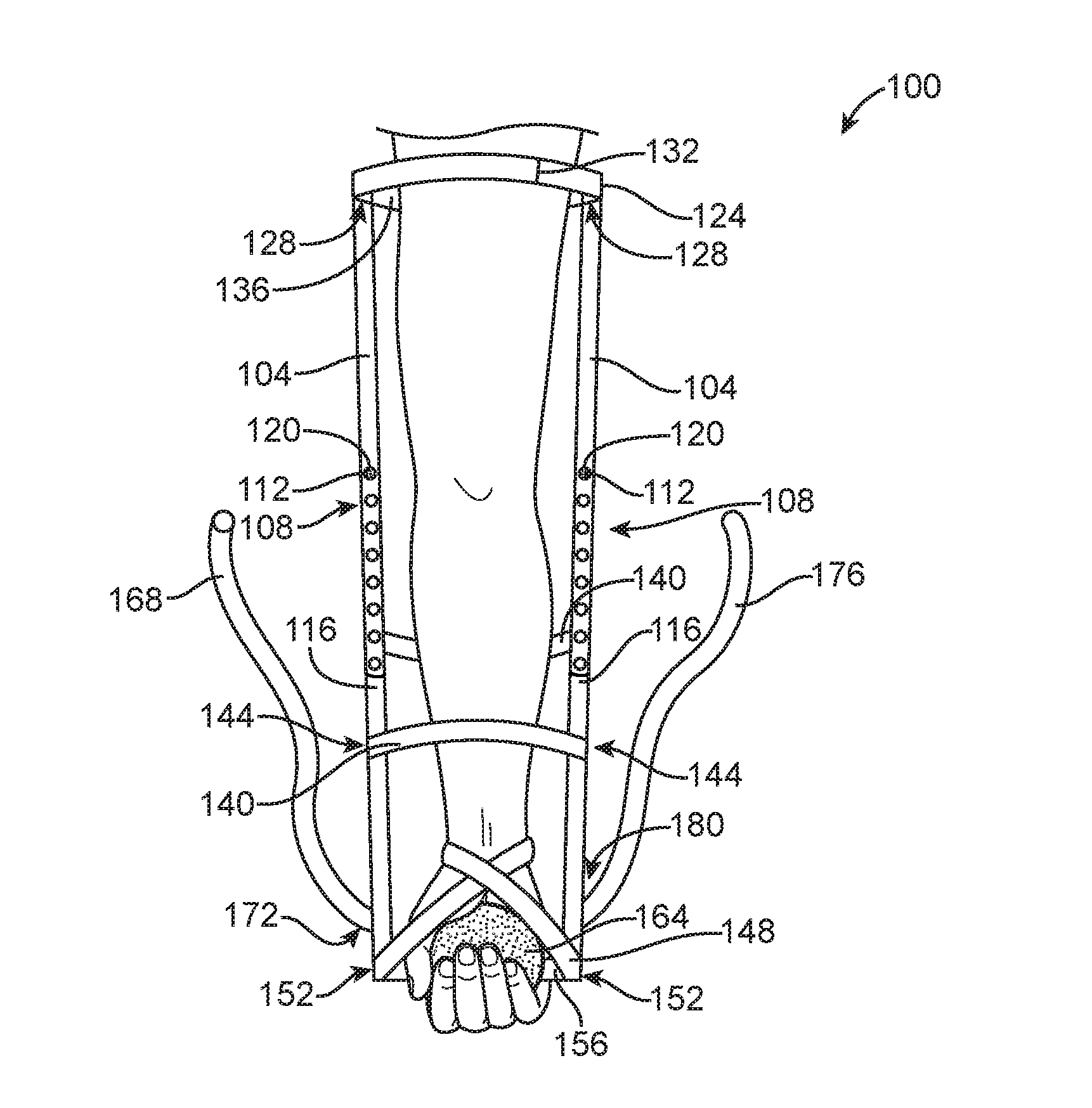Medical Protective and Exercise Restraint Systems and Methods
- Summary
- Abstract
- Description
- Claims
- Application Information
AI Technical Summary
Benefits of technology
Problems solved by technology
Method used
Image
Examples
Embodiment Construction
[0022]Embodiments disclosed herein offer selectable levels of protective restraint, from liberal to intermediate exercise to strict, thereby allowing for minimal restraint necessary at each patient stage while limiting the range of flexion at the elbow and preventing disconnection of tubes or lines near the face and torso or removal of the disclosed device by a patient. This disclosure includes dual slat embodiments (see, e.g., FIGS. 1A, 1B, and 5) configured to avoid trauma to the skin of the underside of the arm or back of the hand in at-risk patients, such as from skin breakdown when used for typical lengths of time required for intubated patients, by providing minimal skin contact with the arm and hand. Also disclosed are single slat embodiments (see, e.g., FIGS. 2A, 2B, 6, 7A, and 7B) with minimal skin contact at the back of the hand and the side of the torso. Lastly, lateral rod embodiments are disclosed (see, e.g., FIGS. 7A and 7B) with negligible contact with either the arm,...
PUM
 Login to View More
Login to View More Abstract
Description
Claims
Application Information
 Login to View More
Login to View More - R&D
- Intellectual Property
- Life Sciences
- Materials
- Tech Scout
- Unparalleled Data Quality
- Higher Quality Content
- 60% Fewer Hallucinations
Browse by: Latest US Patents, China's latest patents, Technical Efficacy Thesaurus, Application Domain, Technology Topic, Popular Technical Reports.
© 2025 PatSnap. All rights reserved.Legal|Privacy policy|Modern Slavery Act Transparency Statement|Sitemap|About US| Contact US: help@patsnap.com



